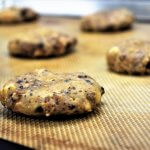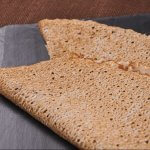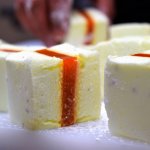When it comes to the softer side of charcuterie that is, preserved meats other than whole cured cuts and dry sausages, the lines are a little blurred. How much do you really know about the blended, shredded and layered delights that are pâtés, terrines and foie Gras.
What are the big differences between these classic charcuterie plate or appetizer spread, and how do you serve them?
Paté is meat or vegetables ground into a paste and seasoned. Paté can come from a variety of sources such as poultry, game, beef, seafood, lamb or pork.
Foie Gras is paté made from the fattened liver of geese or ducks.
Foie Gras :
Foie Gras is French for “fat liver,” and this delicacy is made from the livers of specially fattened geese or duck.
Foie Gras is considered an ultimate culinary delight. You will find a Foie Gras in every house mostly during the holidays such as Christmas and New Year’s Eve.
It is eaten raw, half-cooked or cooked, eaten alone or as an accompaniment to other dishes like meat. Under French law “Foie Gras is part of the protected cultural and gastronomic heritage in France. By fatty liver means the liver of a duck or a goose specially fattened by gavage “. His flavor is described as rich, buttery, and delicate, unlike that of an ordinary duck or goose liver.
France is the first world-class Foie Gras production is 18820 tons. Foie Gras is produced mainly in three distinct regions of Aquitaine, Midi Pyrenees, Pays de Loire (92%) Brittany and Poitou Charente for the rest of the production.
There are two species of foie Gras.:
- Pinkish, the Goose Foie Gras is delicate and subtle flavor. Its texture is creamy and smooth.
- Orange-beige color, Duck Foie Gras has a stronger taste and a more pronounced flavor than goose Foie Gras.
Pate:
Pate is an hors d’oeuvre made of seasoned ground meat, poultry, seafood, or vegetables, mixed with fat and other base ingredients, such as herbs, spices or either wine or brandy (often Cognac or Armagnac).
Pate can have a smooth or coarse texture. Pate is often served baked in a crust (en croute) or molded in a terrine. Some Pates are finished with a garnish for flavoring such as chopped nuts. Pate may be served molded or unmolded, hot or cold, but tends to develop its best flavor after being chilled.
How should you serve pâté or Foie Gras? Good bread of course, and wine!
It is important to have a balance with the rich flavors of pâté or Foie Gras.
You can enjoy it with a light red or white wine.






Loved, the way that was explained the deffrence between the Two delicious delicacy, thank you.
I was first introduced to foie gras on a visit to the Pyrenees two years ago. I have some friends in France and they have a vacation home in the Pyrenees. We went during the off season. I had had foie gras at least once at another restaurant there but while in the Pyrenees, I became addicted! Knowing that I liked it after eating it a few days prior, I ordered it there. It was nothing short of amazing! The flavor was so intense! Fortunately, they had a small shop inside where they sold many of their canned products.
I bought 2 jars of canned foie gras. It’s been almost 2 years and I finally opened one. I want to have my cake and eat it too! Anyway, since they are only good for another year, I thought I better indulge soon or I will lose it to time.
It was amazing! I’m using it sparingly, so I’ve still got half a jar left plus another jar. But I’m reminded of our waitress who informed me it would not taste the same because I was served fresh foie gras. Let me tell you, I am NOT disappointed! The flavor is so delicious! I spread a bit on French bread and voila! I’m in heaven!
It DOES look super funky, though. I could not open the jar so my husband took it into his shop and solved the riddle. There appears to be a lot of bright yellow fat surrounding the actual Paté. But the fat is also tasty! Together they make a delicious condiment for French bread.
Now, all I have to do is find a foie gras source here, and I’m golden!
Hello Glenna,
Thank you so much for your comment